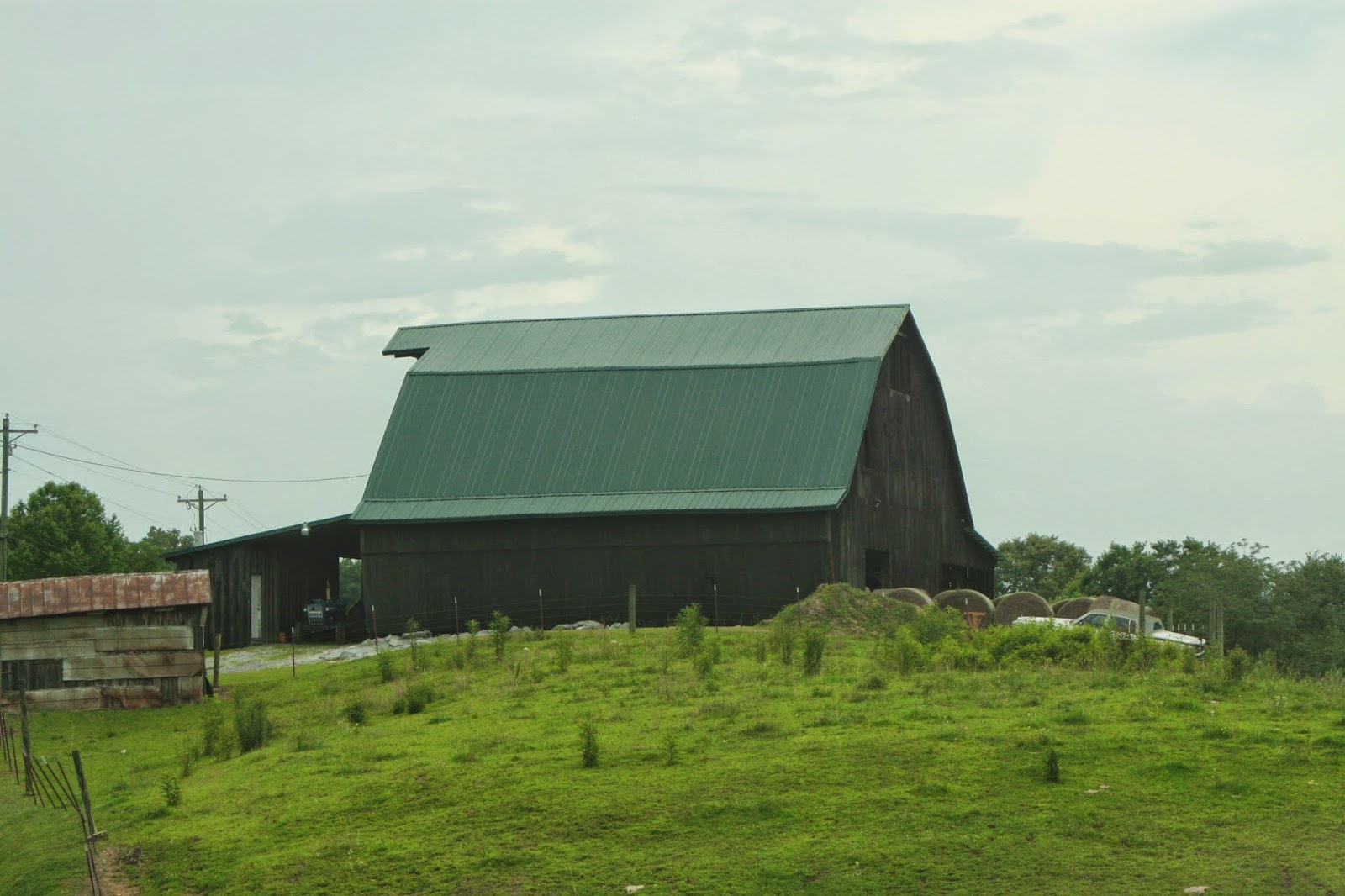As
you ramble around the country back roads where you live, it's
difficult to not see a structure often overlooked for its usefulness
and beauty, a barn. They come in all styles, shapes, colors and
ages. I know many of you know about the National Registry of Houses
but did you also know there's a National Registry of Barns. Yes,
certain barn styles and within certain range of years can be placed
on the National Registry of Barns.
Many
of the barn styles are based on ethnic cultures and as people came to
America from England and Europe, they brought with them the style
barn they had back in their old homeland. These various styles
started popping up in America wherever they settled. The styles
shifted somewhat based on where they settled and the climate of the
region.
If
you go up North to Wisconsin, Vermont, New York, etc., the house, the
storage sheds and the barn are often connected. That way the farmer
could leave the warmth of his kitchen and go to a shed or to the barn
without going outside in the deep winter snow. Since the winters in
East Tennessee where I live aren't that long nor usually that cold and quite often
with minimal snow this building practice is not required.
There
are Seven Classic American Barn Styles.
- Bank Barns, usually found in the mid-west and are called this for they were multi-storied and somewhat resembled a large office or bank building.
- Round and Polygonal Barns, built by the Shakers in the 1800s
- Tobacco Barns, found in the South and East used for hanging the tobacco leaves to cure as tobacco was a money crop.
- English Barns, one of the first style built and were usually smaller and rectangular in shape.
- Dutch Barns, which are among the oldest and rarest and were known for their gabled roof style.
- Crib Barn, which was made from unchinked logs and was actually two barns under one roof with a breeze through in between. Commonly found in the South.
- Prairie Barn, built large to hold large herds of livestock with roofs almost touching the ground.
East
Tennessee is well known for the Crib Barn and another barn that was
often used, known as a Cantilever Barn. It was unique because the
barn was designed so that each side had an overhang which was used to pull a
wagon loaded with corn or hay under so that it would be out of the
weather in case of rain or snow. It also had a breezeway center
section that could be used for the same purpose or to get the
loaded wagon by the doors of the cribs on either side.
The
Cantilever Barns are not as plentiful now days but some can still be
found in and around the Sevier County area, and in Cades Cove of the
Smoky Mountain National Park. While traveling around the United
States and other countries, I have never seen a Cantilever Barn
anywhere but in the Appalachian Region.

 Cades
Cove – Double Crib
Cades
Cove – Double Crib
Cades Cove – Cantilever Barn
Throughout
the Seymour area you can find lots of barns. Just like houses, each
one has its own story to tell if it could talk. Many barns outlive
the farm houses and the house was the premier focus of the property. While
farm houses come and go, the barn was usually the cornerstone of the
place, never changing much over the years. Some were painted and
some not. Over the years they become faded, run down and mostly
forgotten. However, they had a major place in our area which is and
was mostly farm land where a good barn housed some of the animals,
their feed and some of the family's food also.

Many
of the barns are still much in use while some are being slowly
retired. It seems a pity to see these majestic buildings slowly
waste away but it takes money to keep them repaired and often it is
cheaper to build a more modern metal structure than wooden buildings.
Whether
Summer, Fall or Winter, that old barn just keeps standing, waging a
war against time and its slow demise. Though it may not have a new
shiny coat of paint, it still has a place in the history of our
country.




Whether
large like the barn above or small like the red barn used for horses,
each has a place and a use during its lifetime. They may not be as
respected as the farm house, their interior may not be as elegant as
the main house, but their usefulness is just as important and in some
cases, even more important.
All
of these barns are located in the area of Tennessee where I live except
the first two
in the article which are located in Cades Cove. When taking a
leisure drive around the back roads slow down and check out the various
barns and out buildings that you see there. Take a little time to look
into the backyard (or in some
cases across the road from the house) and give these pieces of
Americana a sincere look. Without them, many families would not be
here today or would not have grown and prospered. The Barn is truly a
building to appreciate.



No comments:
Post a Comment